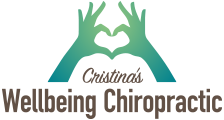Excellence in Podiatry
Podiatric Treatment
Specialist care for you
Specialist care for you
Diagnosis and treatment of foot and ankle problems.
Do you suffer from any of these conditions?
- Pain in any part of your foot when walking, running or moving around.
- Painful ankles, knees or lower-legs including shin-splints, ligament issues or stress fractures.
- Arch pain (also known as a collapsed arch).
- Issues with your lower back linked to your gait when walking or running.
- Pain under the heel when first stepping out of bed in the mornings, or after sitting for long periods of time.
- Damaged, thick, painful, yellow, fungal or ingrown toenails.
- Corns, hard, dry and cracked skin.
- Infections of the skin such as athlete’s foot.
A Podiatrist Could Help
Our highly qualified and experienced podiatrist provides treatments for a wide variety of foot-related problems, including sports injuries, foot problems in children, painful heels and lower back pain. Our goal is rehabilitation and re-education, to leave you pain free and improve your standard of living and general wellbeing.
New Verruca Treatment
Verrucae, verrucas or plantar warts are a viral infection of the skin on the foot. The virus responsible is the Human Papiloma Virus (HPV). Over the last few years there has been a program to vaccinate teenage girls against HPV infection, unfortunately the strain this covers does not cause verrucae so will not prevent them.
Most verrucae will disappear on their own within six months of them coming because the body’s immune system will make antibodies which help you get rid of the virus yourself. However it may be necessary to treat a verrucae, perhaps if it is painful, been there too long or its appearance upsets you.
Microwave emblation is a technique of warming the verrucae to stimulate the body to get rid of the virus through the immune system meaning once successful you will very likely been protected from further infections in the future.
The treatment involves short bursts of microwave energy applied to the verruca using a pen like applicator. There is some pain during the treatment, only a few seconds which stops straight after, but no need for dressings and no pain or discomfort after the treatment.
Research has shown the treatment to be around 90% effective and we are very happy to confirm that we are now able to offer this treatment at our clinic. If you would like more information please check out the Swift website or contact us.
Routine Podiatry Treatment
Routine Podiatry starts with a foot health check (recommended annually), a neurological and vascular evaluation and a full treatment, including hard skin & corn removal. Nails are cut, cracked heels are gently debrided. Treatment finishes with a circulation boosting foot massage using herbal or specialist foot creams.
Children’s Foot Problems
When a child first walks, their feet appear very flat for a few reasons. Firstly, they still have a lot of fatty tissue around their arch, which will in time decrease with activity, and secondly, their foot is still twisted slightly so when they stand their foot will roll inwards to get onto the ground. As they get older, up to age five, things change, and eventually the foot should become ‘normal’ in appearance. It is important to remember that there is a hereditary factor with foot type and therefore if problems have been experienced by blood relatives it may be worthwhile having a professional opinion to assess and possibly reduce the risk of future problems for young family members.
Steroid injections Therapy
Steroid injections are used for many painful foot conditions including capsulitis, Morton’s neuroma, tendonitis, plantar fasciitis. An initial appointment will evaluate the foot condition presenting and allow the podiatrist to determine whether steroid injection therapy is a suitable option for the presenting problem.
Ingrown Toenails
If you have ongoing problems with ingrown nails then the best option is nail surgery. Under local anaesthetic the podiatrist removes the side/sides of the nail that persistently grow in, along with the nail matrix where the nail grows from. The procedure has a 98% success rate, and takes approximately 6 weeks to heal.
Verrucae/ Warts and Falknor’s Needling
Falknor’s needling is a technique which activates the body’s immune system to help fight the verrucae/wart. The procedure is undertaken under local anaesthetic and involves destroying the capsule surrounding the verruca which protects it from the body’s immune system and has a success rate of over 80%
Sports Podiatry
Sporting activity places greater stresses on the body’s joints, bones, and soft tissues (muscles, tendons, ligaments). For example, a runner’s foot, strikes the ground approximately 9500 times during a 10 km run, with a force three to four times their body rate! For this reason, injury is more likely to occur during sport than during everyday activity.
The best treatment for all injuries is prevention.
General physical fitness – research has shown that more injuries occur when an athlete is fatigued. In addition, fatigue promotes poor technique. Warm up and stretching before activity – a more effective stretch is achieved when the soft tissues have been warmed up. Therefore, a light jog should precede stretching. All major muscle groups must be stretched, with each stretch being held for at least 20 seconds.
Appropriate footwear – e.g. a running shoe should not be worn when playing tennis as it has poor ‘side to side’ stability, thus increasing the chance of an ankle sprain. Conversely, a tennis shoe does not provide a runner with enough cushioning and flexibility, making the runner more prone to overuse injuries such as shin splints and stress fractures.
Correction of faulty foot function – a musculoskeletal examination (often referred to as biomechanical examination) determines structural malalignment and muscular imbalances that can lead to repetitive, excessive forces being placed on the structures of the feet, legs, knees, hips and lower back. Injuries which fall into this category cannot be prevented through the above steps alone.
Musculoskeletal examination includes a functional evaluation of shoulders, spine, hips, knees, ankles, sub talar joint, Mid tarsal joint, 1st ray function, relaxed and neutral calcaneal stance, dynamic gait evaluation and footwear wear pattern evaluation.Your Podiatrist is qualified to detect musculoskeletal imbalances in the lower limb and may prescribetailored rehabilitation exercise along with “off the shelf” or more precise, computer designed and manufactured custom-made functional orthotics. Orthotics, when worn in appropriate footwear, can help to restore optimal foot function.






